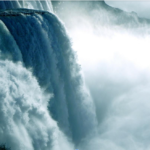John Constable (1776 – 1837) was a British Landscape and Portrait painter. He is considered one of the greatest British painters of the Romanticism period and is most famous for the innovations he made in landscape painting.
Landscape paintings were generally seen as inferior to other genres at the time. Despite this, John stuck to his belief that not only are landscapes one of the essential topics an artist can paint, but also the most beautiful, and his paintings did just that.
Having never achieved any significant level of success in his lifetime, John Constable would become one of the most highly regarded and successful painters in the history of British art. As a result, his paintings and artwork are highly sought after and worth millions today.
Every Painting Begins with a Sketch
John’s love of art and nature started from an early age. During his youth, he would travel around the areas of Essex and Suffolk, making sketches and drawing pictures of the local countryside. John would credit these trips as the inspiration for becoming a painter, and he continued to utilize sketches as an integral part of his painting process.
His introduction to art came soon after, and he became inspired by artists such as Claude Lorrain, Thomas Gainsborough, and Peter Paul Rubens. So it seemed that Constable’s path as an artist was set despite advice from friends and family against it. Let’s learn about John Constable.
John came from a wealthy family and was expected to succeed in his father’s business when the time came. However, after much persuasion, John’s father allowed him to pursue his dream and even gave him a small allowance toward it. John enrolled in the Royal Academy of Art in London soon after, where his life as a professional artist began.
The Royal Academy
The Royal Academy School is the oldest art college in Britain and is considered one of the finest in the country. Furthermore, it was also the first institution in Great Britain to provide professional training to prospective artists.
John Constable entered the academy in 1799, where he completed a three-year post-graduate program in fine art. Toward the end of his studies, John was offered a job in a neighboring college as a drawing master. However, he declined the position for fear that it would mean the end of his artistic career.
During the program, an emphasis of study on the old masters was a primary focus. As a result, John’s painting style would be influenced by several great painters, and by the end of his studies, he was determined to become a professional landscape painter.
Inspiration is Education
During his time at the college, Constable’s painting skills increased dramatically. He was considered one of the most talented students in his class, and the maturity and detail of his painting style were praised by others.
John was influenced by many of the old masters, but one in particular, Claude Lorrain, stood out above the rest. Lorrain’s clever use of romantic light, fresh color, delicate brushstrokes, and the overall composition of his pieces would provide a benchmark for Constable’s later work.
Like Lorrain, John too focused primarily on the landscape as the model for his paintings. However, Constable noted his dislike for mountains and favored more social scenery. As a result, his art would highlight landscapes associated with human habitations, such as villages, churches, lakes, and rivers.
The Six Footers
To make ends meet, John took up Portrait painting and showed considerable talent. Despite this talent, though, he found it to be extraordinarily dull and continued to pursue his passion for landscape painting on the side.
It wasn’t until 1819 that John sold his first major landscape painting. Titled “The White Horse,” widely considered one of his most significant paintings. The notoriety and money gained from the painting would lead Constable to begin a series of six monumental paintings that became known as the “Six Footers.”
The White Horse – John Constable
Named for their six-foot scale, they would depict a series of narratives on the river Stour in East Anglia. Beautifully detailed, they were praised by critics as some of the most realistic and all-encompassing depictions of nature ever painted by an Englishman and are unquestionably the defining paintings of the artist.
Life is the Greatest Teacher
Throughout his career, John Constable’s primary goal as an artist was to capture the sounds and feelings of nature. Sounds such as running water, the Summer breeze, the call of the birds, and the emotions that nature inspires were some of John’s significant inspirations.
Like many great artists, he was far more interested in capturing and expressing the feelings inspired by a scene rather than simply the scene itself. This continued this study of nature throughout his career, even after moving from the countryside to the seaside.
The magnificence of the sea and the coast provided a brand-new world of sounds and feeling for Constable to explore. This period saw Constable produce some beautiful beach and coastal scenes. His education in the study of life would continue to grow and expand in the years that followed and can be seen throughout his body of work.
Conclusion
John Constable’s talent as a landscape painter was as good as any of the greats throughout history. Unfortunately, he may not have achieved the heights of success until after his death. Nevertheless, the beauty of his work speaks for itself, and John Constable’s paintings are worth learning more about.













